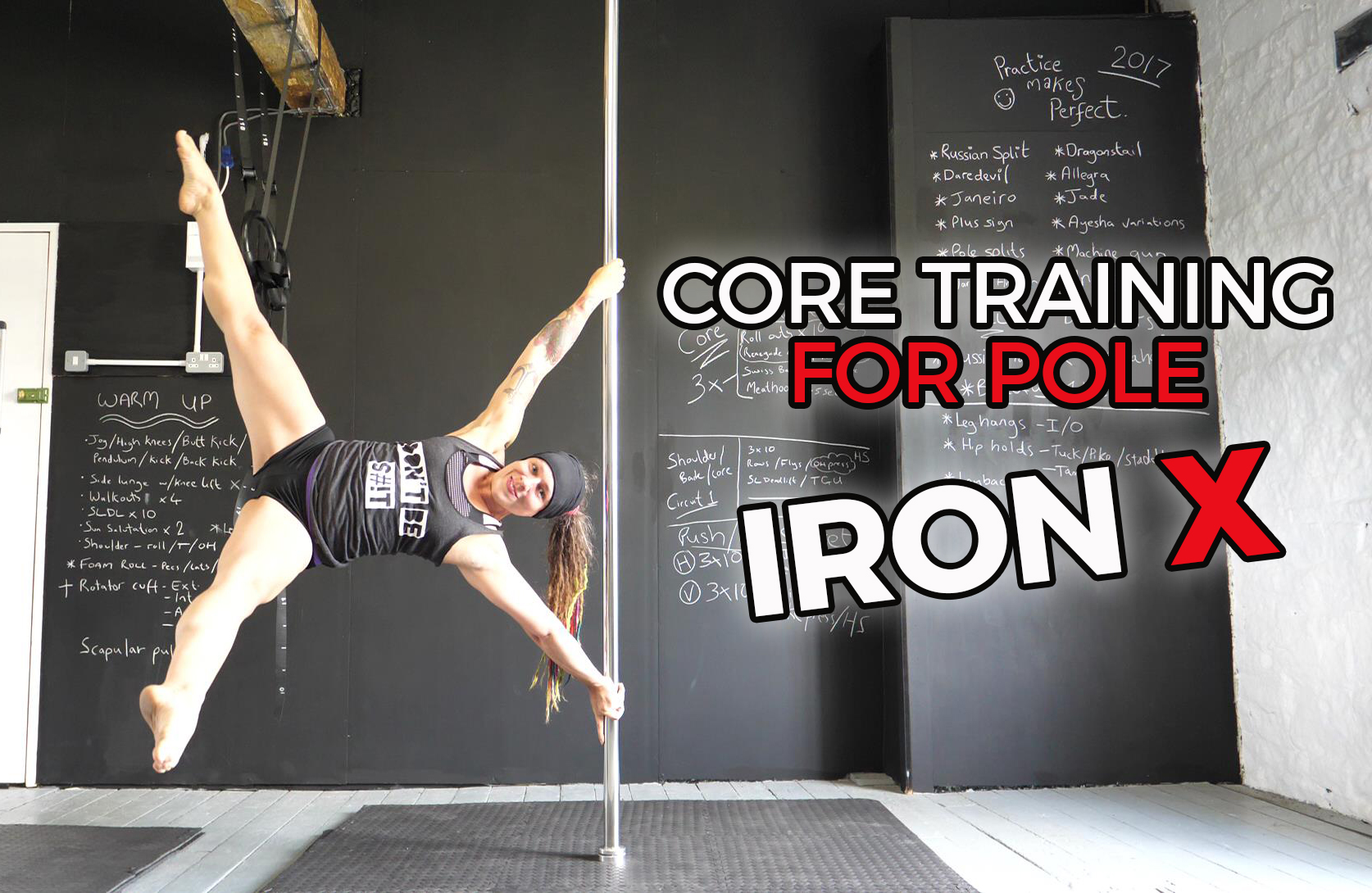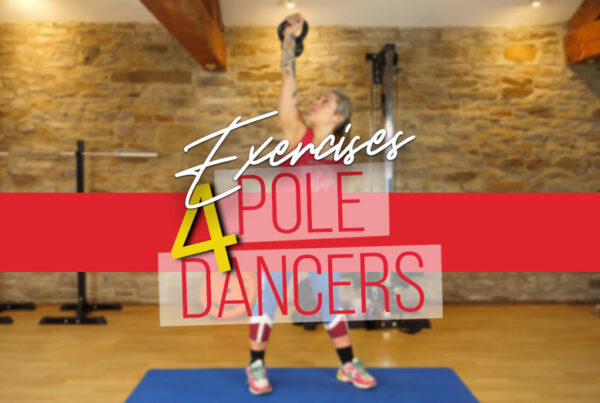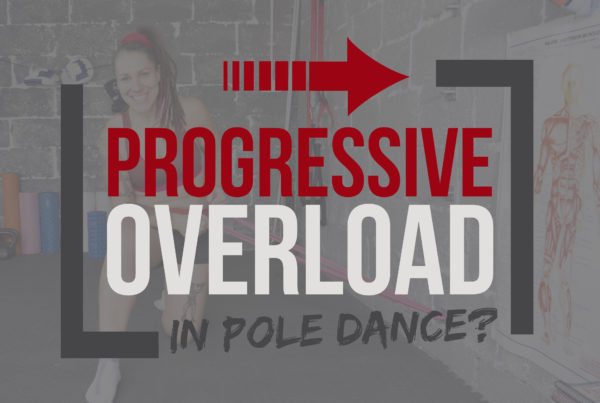If you read my previous posts on core training for pole dancers, you’ll know all about anti-extension and anti-rotation core training.
Today, I want to talk about the third and final category of core stabilisation exercises that should form part of your “mission: be a pole badass” training programme: anti-lateral flexion.
Here’s why it’s important for pole dancers and how you can incorporate it into your training…
Core blimey
If you’d rather watch than read, below is a summary of this blog in video format, along with technique guidance on the recommended exercises:
What is anti-lateral flexion?
Lateral flexion is basically a side bend. If you ever do oblique crunches on the pole in your pole fitness class – that’s lateral flexion.
As discussed in Part 1 of this blog series, one of the main roles of our core muscles is to stabilize our spine and pelvis position. So a great way to train our core is to resist that lateral flexion. Obviously, alongside training the actual movement of side bending (we do a lot of side bending in pole, so we absolutely need to be strong in that movement as well as in resisting it!).
A good way to train our side-bending muscles is to make them strong as hell at what they were literally born to do: RESIST that flexion.
In other words: anti-lateral flexion exercises!
Muscles responsible for anti-lateral flexion
The two main badgers responsible for anti-lateral flexion are the obliques and the quadratus lumborum (QL) muscle.
Most people are familiar with the oblique muscles at the side of the body, but the lessor known QL muscle is also important in lateral flexion movements and resisting lateral flexion. It is a deep muscle that lives in the lower back, connecting our spine with our pelvis.
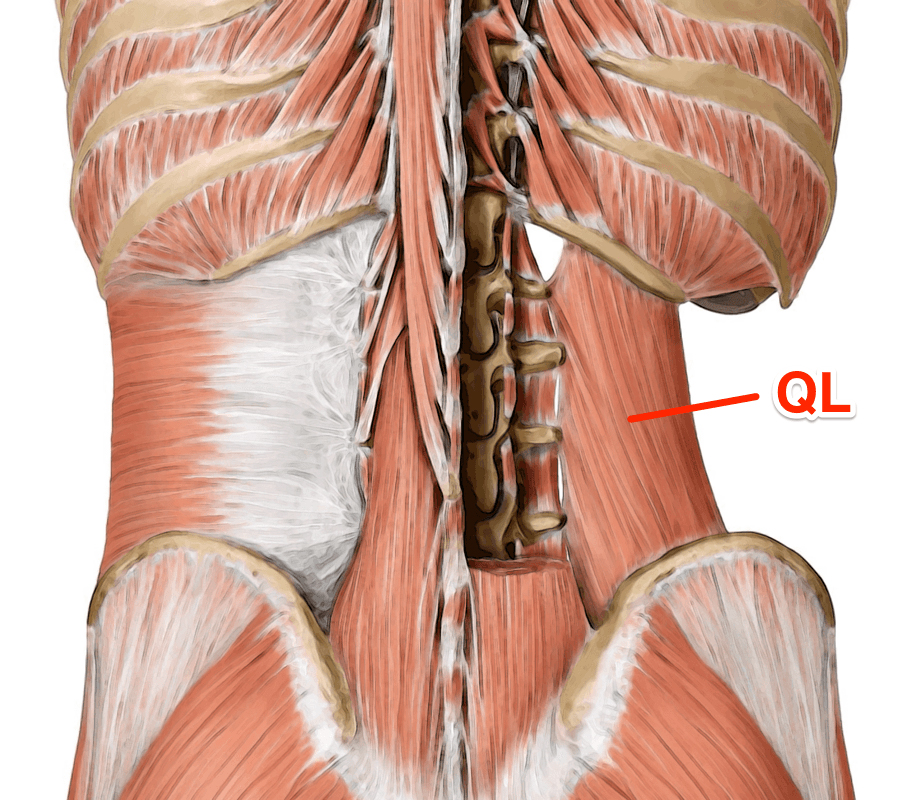
Why is anti-lateral flexion core training important for pole dancers?
When we’re doin’ our thang on the pole, we need a super strong core in order to resist a whole crap load of different forces—from all directions, so training all 3 classes of core exercises (anti-extension, anti-rotation and anti-lateral flexion) is important.
But where anti-lateral flexion really comes in to its own is in any moves where we are trying to hold our body in a horizontal position, side-on to the floor – if you want a flawless flag and that elusive Iron X, you’re gonna need some serious anti-lateral flexion core strength!
Okay, I neeeeed my Iron X, like, yesterday! How do I train this mysterious anti-lateral flexion strength?
Side planks! Always start with side planks!
^^Technique guidance and progression options in my video above^^
I know it sounds basic. Side planks may not be the fancy pants answer you were expecting but, and I seriously cannot repeat this enough: GET STRONG IN THE BASICS FIRST. A solid foundation will set you up for long-term success in pole—you’ll progress faster, you’ll have less chance of injury and you’ll be able to continue poling for many years to come.
Build endurance in your side planks before even thinking about adding the batsh*t crazy stuff. You’ll thank me later.
Start with 15 second holds and build up the time you can hold your side plank. Once you can hold a perfect side plank for around 60 seconds on each side, that’s when I would start to add the more advanced progressions in.
Progressing the side plank
There are many awesome side plank progressions but my favourite for pole dancers is to lift the top leg. It adds extra instability to the movement and also challenges the hip and leg muscles of the top leg in a very similar way to holding that familiar straddle position we often use in pole – it’s even starting to look like an Iron X now…
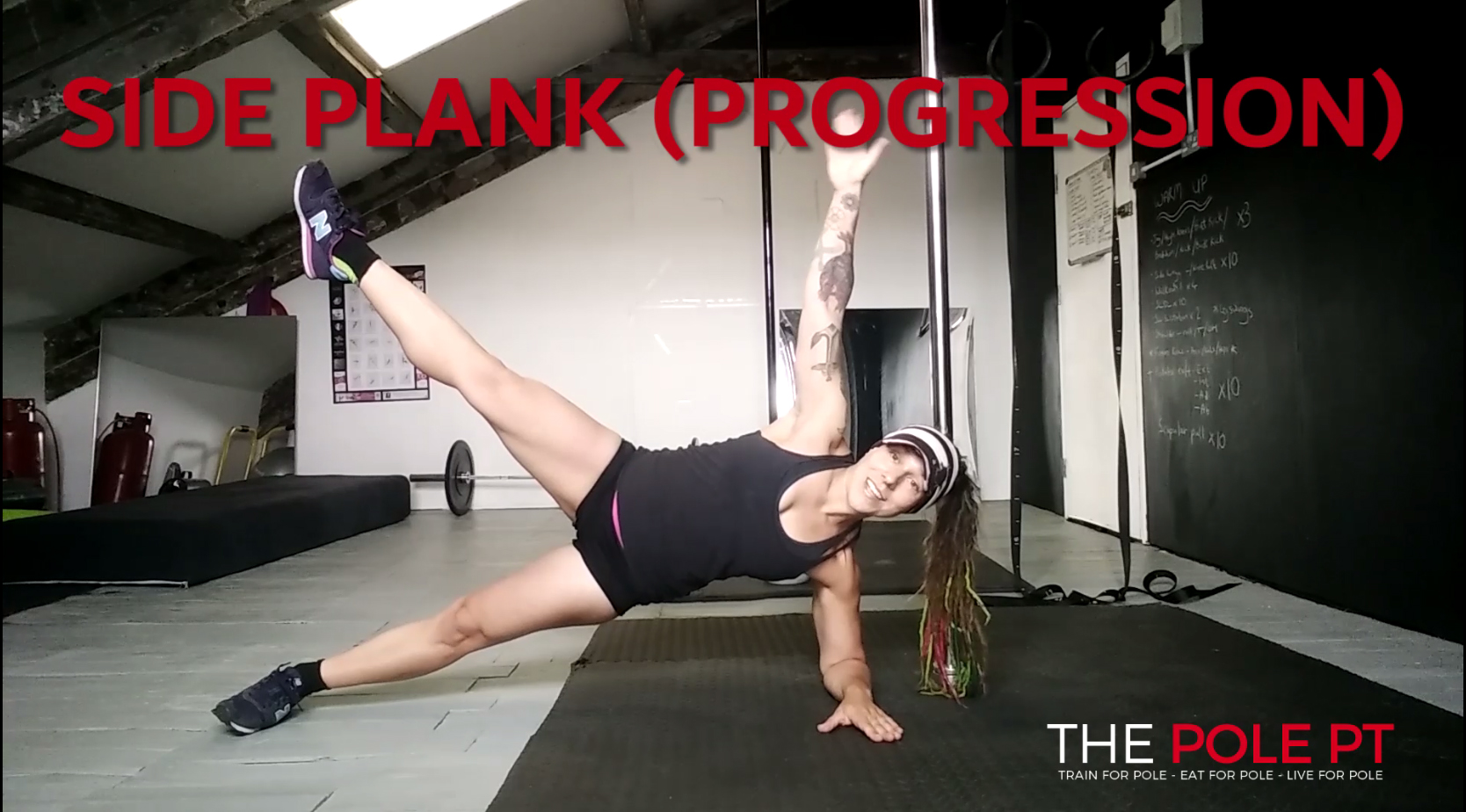
My second favourite progression is a common strongman exercise: the suitcase carry! Essentially, the suitcase carry is as simple as picking up something heavy in one hand and carrying it, but there are some important technique points to remember. Again, technique is in my video above^^. This exercise will help improve grip strength, too!
You can increase the time/distance or load on these suitacase carries as your strength improves.
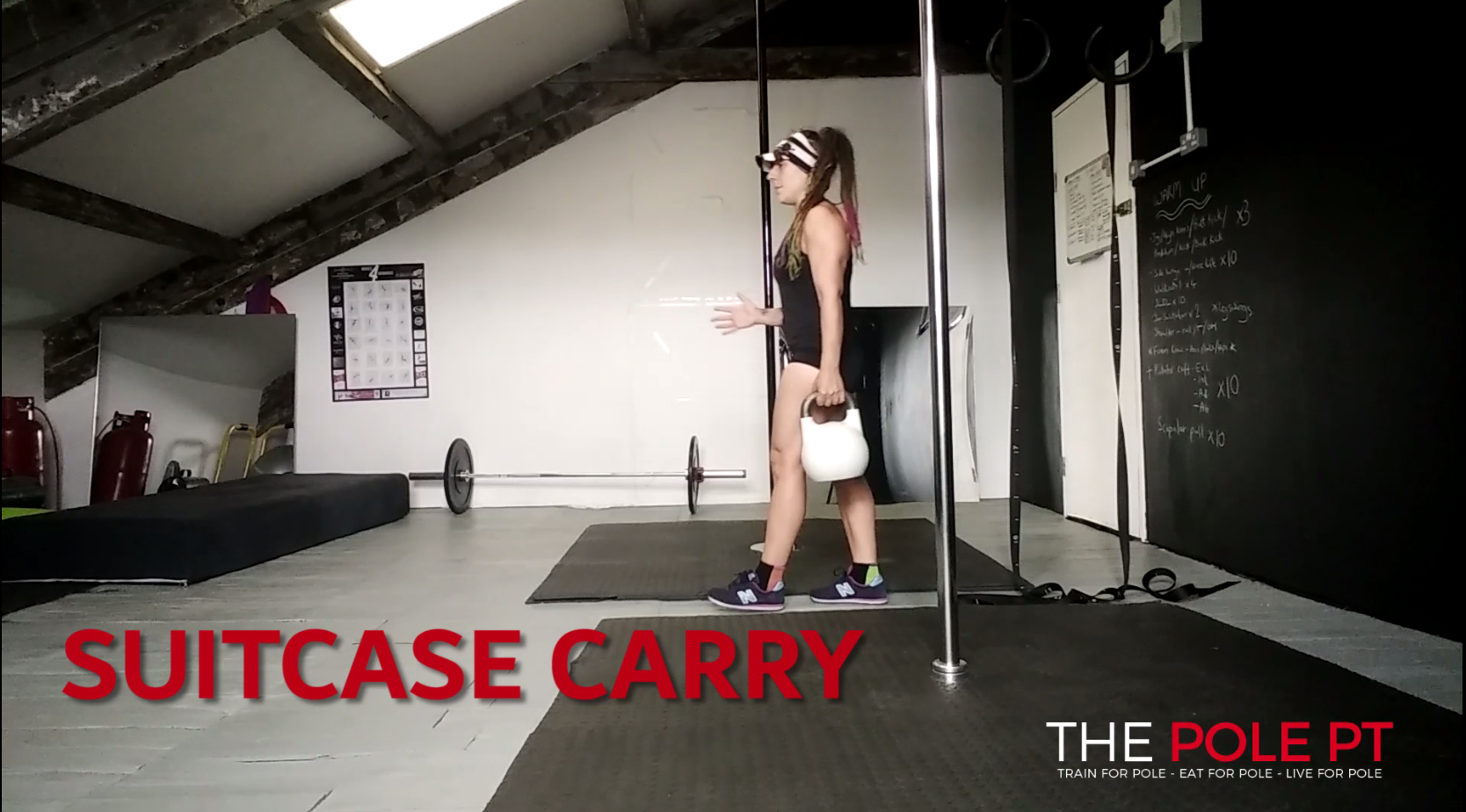
Iron X… hell yah, let’s do this!
As always, please just ask if you have any questions! Neo x
Anti-lateral flexion training has some awesome cross-over benefits for polers, but we are all different, with varying mobility and strength limitations and our own unique training schedules, so we all have different starting point. My best advice? I know I repeat this like a mad parrot, but… if in doubt, get frickin’ amazing at the basics! As you get more advanced, you can combine your lateral core with your overhead pressing movements to make it SUPER Iron X specific, but squeeze all the juice you can from the basics before you move onto more advanced exercises!
If you want more details on how to programme your core training for pole, check out my book – Strength and Conditioning for Pole – which is available now in hard copy or as a downloadable ebook!


